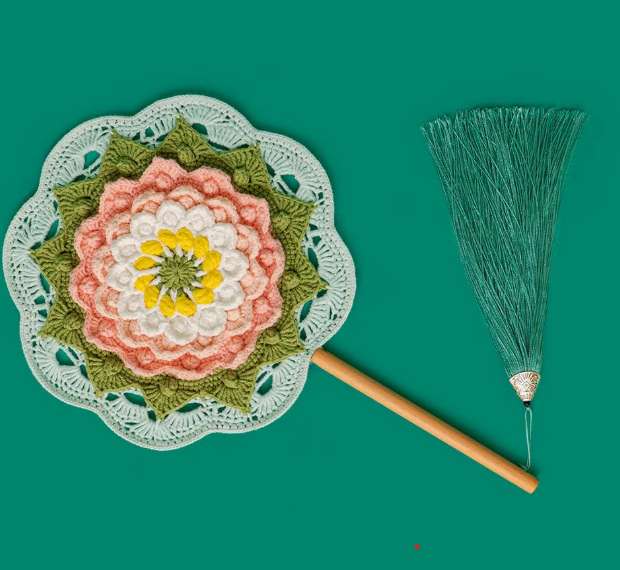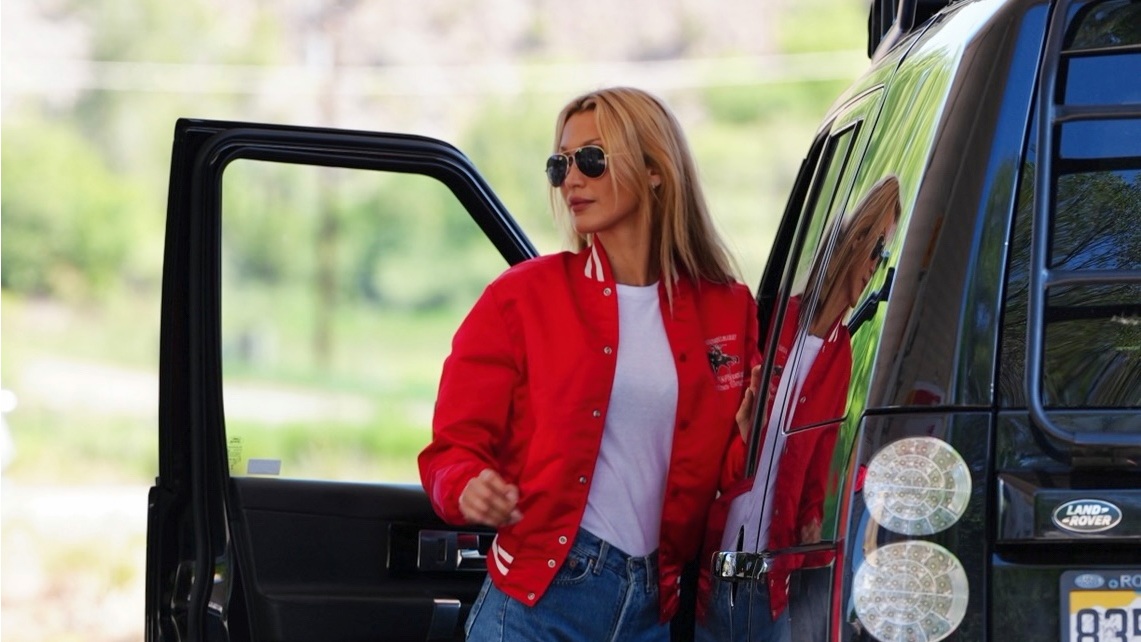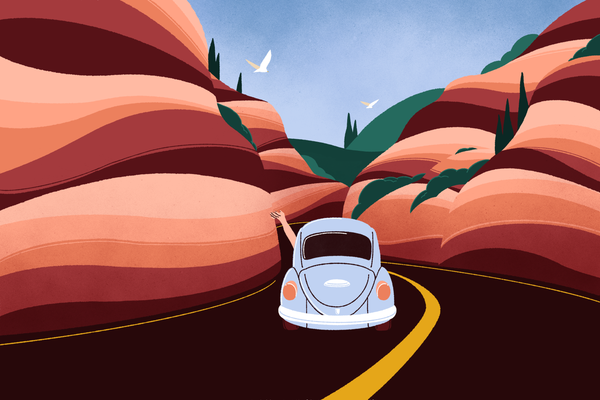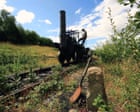How to Turn Your Road Trip Into a Nature Scavenger Hunt
Have you ever found yourself gazing out the window during a road trip, wondering about the trees and wildflowers whizzing by? By turning those fleeting moments into a dedicated nature scavenger hunt, you can transform your journey into an immersive exploration. Learn to identify everything from the wildflowers that grow in cracks in the pavement at gas stations to towering trees that line the highway and you and your traveling companions can foster a deeper connection to nature. During a road trip your friends and family might search for obscure items like dew on lady’s mantle leaves. As you explore, you’ll train your attention to details like delicate veins on a leaf or the melody of a specific songbird. Think of this as an invitation to engage more deeply with the world around you. Before You Go Research the Land Before embarking on your nature scavenger hunt, take a moment to consider the specific location. Research the local ecology and history, including the Indigenous peoples who have historically stewarded the land. Consider the climate, soil, and topography, and how they influence the plant and animal life in the area. What unique flora and fauna call this place home? Are there any state or national parks in the region? Is there a state tree or flower to search for? By orienting yourself to the environment, you can tailor your scavenger hunt to the local landscape and create a more meaningful experience. Pack the Essential Tools A reliable field guide can help you identify plants, animals, and other natural features. A notebook and pen are essential for jotting down observations, sketches, and questions. A camera can capture wild beauty and document your findings. A magnifying glass can help you examine the intricate details of plants and fungi. If you’re using field guides, be wary of inaccurate AI-generated books. Stick with field guides like Peterson’s or apps like INaturalist. Be Respectful Finding a plant on your scavenger hunt list doesn’t mean you should take it. Consider a picture instead of plucking a leaf. You might even offer a greeting or a gesture of gratitude to the land. This can be as simple as taking a moment of silence to appreciate the natural world or leaving a small offering, such as a song. Approach the natural world with respect and minimize impact by treading lightly on delicate ecosystems. Scavenger Hunt Ideas According to author Richard Louv, who coined the term “nature-deficit disorder,” many children can identify numerous corporate logos but not common plants and trees. A nature scavenger hunt can help reverse this disturbing trend by encouraging children to develop a lifelong love of the outdoors. I invite you to use the following lists and ideas for inspiration. What you seek, of course, will depend on where you are. Senses Scavenger Hunt A nature scavenger hunt doesn’t have to rely solely on sight. Engage other senses to create a truly immersive experience. Can you feel the smooth surface of a stone, the furry texture of a catkin, or the rough bark of a tree? Can you hear the call of a crow or the song of a woodthrush? Can you smell the salt of the sea, the sweetness of lilacs? By tuning into your senses, you can awaken the breadth of sensory experience. Here are a few ideas to get you started: TouchFind three smooth stones, each with a unique shape.Locate a tree with fuzzy catkins.Find a plant with thorns and sketch or photograph their protective features. SightFind and identify a five-petaled yellow wildflower and capture the beauty in a photo. ScentFind a fragrant wildflower, note the species, and sketch their delicate features. SoundListen for the melody of a woodthrush and note the time and location. Consider recording his song. Medicinal Plant Scavenger Hunt Trees, wildflowers, and fungi have provided sustenance, shelter, and medicine for countless generations. They are more than just botanical specimens; they are vessels of stories, culture, and healing. Mugwort, for instance, is a common plant historically used for inducing lucid dreams. By learning about the lore and medicinal properties of plants, you can develop a newfound appreciation for each plant and see them through new eyes. YarrowA resilient perennial plant found throughout the United States, yarrow thrives in a variety of habitats and climates, including grasslands, roadsides, disturbed soils, and mountaintops. The Latin name, Achillea millefolium, is derived from the Greek hero Achilles, who was bathed in yarrow to help him survive the battlefield. Yarrow has been used in Western Europe and China as a tool for divination. Used extensively in Native American medicine, yarrow is considered as one of the sacred herbs by the Navajo. Bees, wasps, and butterflies enjoy yarrow, too, and the root contains secretions that strengthen and protect the other plants in their orbit, helping them become more disease resistant. Excellent for binding loose soil together and preventing erosion
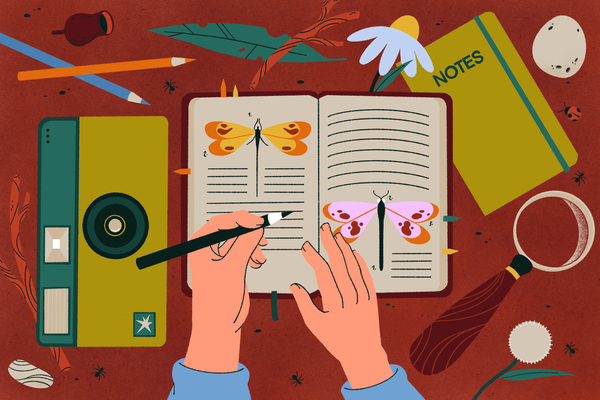
Have you ever found yourself gazing out the window during a road trip, wondering about the trees and wildflowers whizzing by? By turning those fleeting moments into a dedicated nature scavenger hunt, you can transform your journey into an immersive exploration. Learn to identify everything from the wildflowers that grow in cracks in the pavement at gas stations to towering trees that line the highway and you and your traveling companions can foster a deeper connection to nature.
During a road trip your friends and family might search for obscure items like dew on lady’s mantle leaves. As you explore, you’ll train your attention to details like delicate veins on a leaf or the melody of a specific songbird. Think of this as an invitation to engage more deeply with the world around you.
Before You Go
Research the Land
Before embarking on your nature scavenger hunt, take a moment to consider the specific location. Research the local ecology and history, including the Indigenous peoples who have historically stewarded the land. Consider the climate, soil, and topography, and how they influence the plant and animal life in the area. What unique flora and fauna call this place home? Are there any state or national parks in the region? Is there a state tree or flower to search for? By orienting yourself to the environment, you can tailor your scavenger hunt to the local landscape and create a more meaningful experience.
Pack the Essential Tools
A reliable field guide can help you identify plants, animals, and other natural features. A notebook and pen are essential for jotting down observations, sketches, and questions. A camera can capture wild beauty and document your findings. A magnifying glass can help you examine the intricate details of plants and fungi. If you’re using field guides, be wary of inaccurate AI-generated books. Stick with field guides like Peterson’s or apps like INaturalist.
Be Respectful
Finding a plant on your scavenger hunt list doesn’t mean you should take it. Consider a picture instead of plucking a leaf. You might even offer a greeting or a gesture of gratitude to the land. This can be as simple as taking a moment of silence to appreciate the natural world or leaving a small offering, such as a song. Approach the natural world with respect and minimize impact by treading lightly on delicate ecosystems.

Scavenger Hunt Ideas
According to author Richard Louv, who coined the term “nature-deficit disorder,” many children can identify numerous corporate logos but not common plants and trees. A nature scavenger hunt can help reverse this disturbing trend by encouraging children to develop a lifelong love of the outdoors.
I invite you to use the following lists and ideas for inspiration. What you seek, of course, will depend on where you are.
Senses Scavenger Hunt
A nature scavenger hunt doesn’t have to rely solely on sight. Engage other senses to create a truly immersive experience. Can you feel the smooth surface of a stone, the furry texture of a catkin, or the rough bark of a tree? Can you hear the call of a crow or the song of a woodthrush? Can you smell the salt of the sea, the sweetness of lilacs? By tuning into your senses, you can awaken the breadth of sensory experience. Here are a few ideas to get you started:
Touch
Find three smooth stones, each with a unique shape.
Locate a tree with fuzzy catkins.
Find a plant with thorns and sketch or photograph their protective features.
Sight
Find and identify a five-petaled yellow wildflower and capture the beauty in a photo.
Scent
Find a fragrant wildflower, note the species, and sketch their delicate features.
Sound
Listen for the melody of a woodthrush and note the time and location. Consider recording his song.

Medicinal Plant Scavenger Hunt
Trees, wildflowers, and fungi have provided sustenance, shelter, and medicine for countless generations. They are more than just botanical specimens; they are vessels of stories, culture, and healing. Mugwort, for instance, is a common plant historically used for inducing lucid dreams. By learning about the lore and medicinal properties of plants, you can develop a newfound appreciation for each plant and see them through new eyes.
Yarrow
A resilient perennial plant found throughout the United States, yarrow thrives in a variety of habitats and climates, including grasslands, roadsides, disturbed soils, and mountaintops. The Latin name, Achillea millefolium, is derived from the Greek hero Achilles, who was bathed in yarrow to help him survive the battlefield.
Yarrow has been used in Western Europe and China as a tool for divination. Used extensively in Native American medicine, yarrow is considered as one of the sacred herbs by the Navajo. Bees, wasps, and butterflies enjoy yarrow, too, and the root contains secretions that strengthen and protect the other plants in their orbit, helping them become more disease resistant. Excellent for binding loose soil together and preventing erosion, yarrow is a wonderful companion plant in the garden, helping co-create a healthy ecosystem.
Lady’s Mantle
Native to southern Europe and grown throughout the world as an ornamental, Lady’s Mantle has naturalized in some states and is considered invasive in others. A perennial herb in the rose family with distinctive, saucer-shaped leaves, Lady’s Mantle, Alchemilla mollis, has long been revered for medicine and magic. Alchemists believed that dew collected from early morning leaves possessed magical properties and could be used in the pursuit of the Philosopher’s Stone. Similarly, some women believed that using the dew on their skin could enhance their beauty. In folklore, Lady’s Mantle is often associated with fairies, who were said to collect the dew for their own magical purposes.
Landmark Tree Scavenger Hunt
By researching and identifying iconic species like the oldest or largest tree in your local area, you can add a layer of historical and cultural significance to your nature scavenger hunt. Here are some examples:
The Great Basin Bristlecone Pine
This species found in the high-altitude forests of California, Nevada, and Utah is one of the oldest living organisms on Earth. These gnarled and twisted trees have defied the test of time, some living for over 4,000 years.
The Saguaro Cactus
The Saguaro cactus is a keystone species in the Sonoran Desert, providing food and habitat for a large number of species. The cactus’ shape and slow growth make the plant a symbol of the American Southwest. The Saguaro’s sweet, red fruit has been a vital food source for Indigenous peoples. The ribs of the Saguaro have been used as building materials in lieu of wood.
Old Oaks
Oak trees, with their sturdy trunks and sprawling branches, are often considered symbols of strength and longevity. The Angel Oak, a Southern Live Oak located in South Carolina, is estimated to be over 1,500 years old. The massive trunk and sprawling branches are breathtaking.
So, grab your friends or family, a field guide, a notebook, and a sense of wonder, and start exploring. As the poet and naturalist Mary Oliver wrote: “Attention is the beginning of devotion.”




























































































